Every educational institution possesses a remarkable story—decades of student achievements, transformative educators, championship moments, and traditions that define institutional identity. Yet countless schools struggle to showcase their rich histories effectively, with yearbooks gathering dust in forgotten storage rooms, championship trophies hidden away in overcrowded cases, and distinguished alumni achievements lost to fading memories. These fragmented pieces of history represent missed opportunities to inspire current students, strengthen alumni connections, and build the institutional pride that defines truly exceptional schools.
A digital school history timeline transforms scattered institutional memories into a coherent, engaging visual narrative that brings your school’s legacy to life. Rather than static plaques that quickly become outdated or traditional displays constrained by physical space limitations, interactive digital timelines provide unlimited capacity to document every significant moment while offering multimedia storytelling that captivates today’s technology-native students and alumni alike.
Why Digital School History Timelines Matter
Educational institutions implementing interactive historical timelines create powerful connections between past excellence and present aspirations. These systems preserve institutional memory comprehensively while building the pride and identity that strengthen entire school communities. Solutions like Rocket Alumni Solutions provide purpose-built platforms that transform forgotten archives into actively engaged resources, making decades of achievements accessible, searchable, and celebrated in ways that traditional approaches simply cannot match.
The Challenge of Preserving Institutional Heritage
Walk through most school hallways and you’ll encounter the familiar signs of incomplete historical documentation: a few championship banners hanging in gymnasiums, scattered plaques recognizing individual donors or achievements, and perhaps a dusty trophy case showcasing only the most recent accomplishments while hundreds of older trophies sit boxed in storage closets. This fragmented approach to historical preservation creates several significant problems that undermine institutional identity and community connection.
The Hidden Cost of Forgotten History
Physical space constraints force impossible decisions about what deserves recognition and what must remain hidden. A typical high school accumulates hundreds of significant achievements over just a few decades—conference championships, distinguished alumni, academic competition victories, and community service milestones. Traditional recognition methods simply cannot accommodate comprehensive documentation of these accomplishments, leading to selective preservation that inevitably leaves most institutional history invisible to current students, prospective families, and returning alumni.
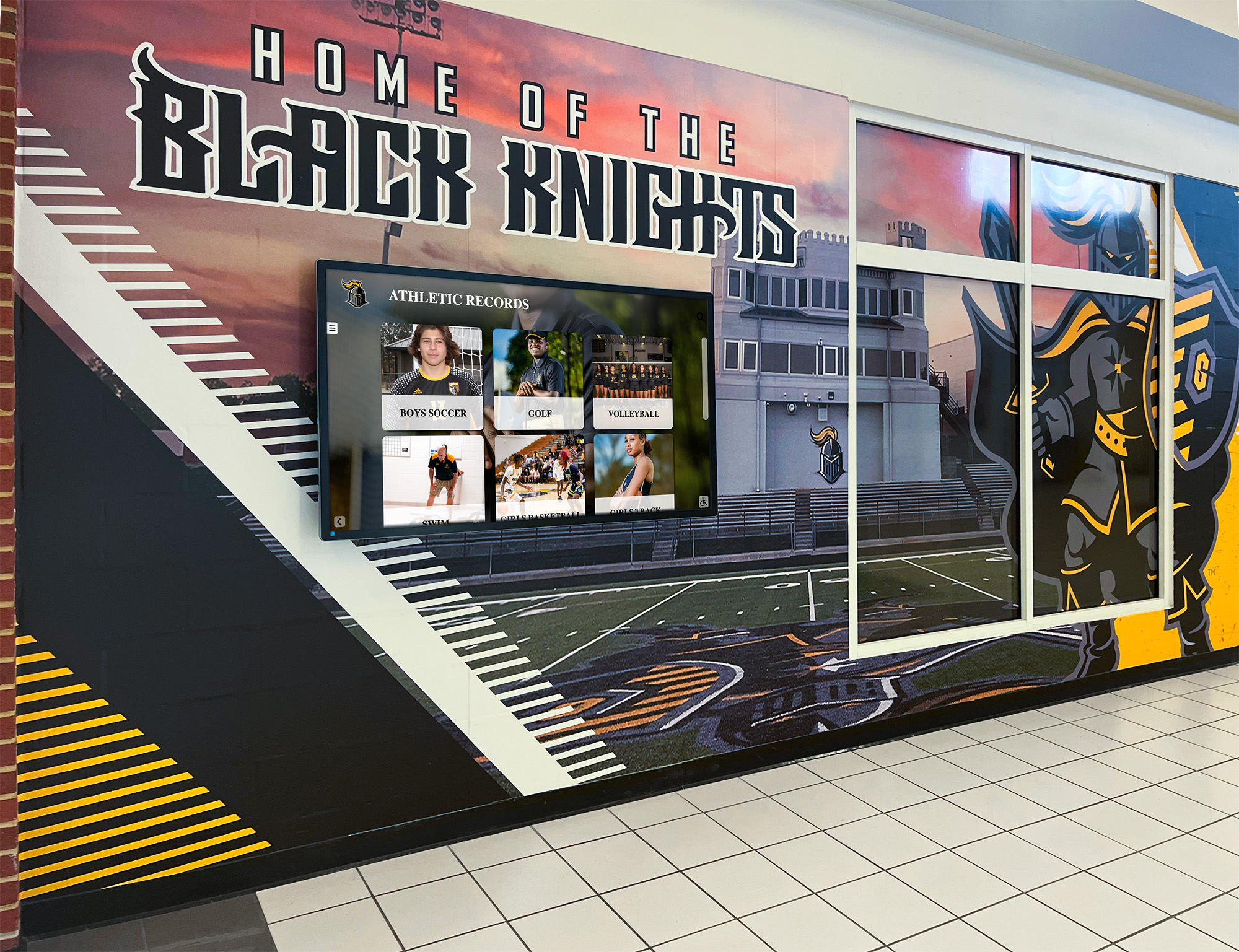
When achievements disappear from view, their inspirational value vanishes entirely. Current students never discover the rich traditions they inherit or see role models from previous generations who faced similar challenges and achieved remarkable success. Alumni visiting campus find no acknowledgment of their contributions, weakening emotional bonds that support engagement and philanthropic relationships. Prospective students and families miss the evidence of sustained excellence across generations that differentiates truly distinguished institutions from their competitors.
The Limitations of Traditional Timeline Approaches
Schools have long attempted to preserve history through conventional methods including corridor displays, commemorative publications, and periodic anniversary celebrations. While these approaches retain value, they face inherent limitations that digital solutions address effectively.
Static Physical Displays: Traditional mounted timeline panels require expensive fabrication, occupy premium wall space, and become immediately outdated as schools continue evolving. Updating these displays demands significant investment in redesign and reinstallation, causing most schools to delay updates until displays become embarrassingly obsolete. Physical space constraints also limit the depth of historical coverage possible, forcing surface-level documentation when comprehensive storytelling would create far greater impact.
Printed Publications: Anniversary books and historical compilations provide detailed documentation but reach limited audiences and become static artifacts the moment they’re published. These volumes sit on shelves rather than engaging daily with school communities, and younger generations accustomed to interactive digital content often find printed formats less engaging than the multimedia experiences they encounter in other aspects of their lives.
Episodic Anniversary Focus: Schools that concentrate historical attention around major milestone anniversaries—50th, 75th, or 100th celebrations—create gaps of decades between meaningful heritage preservation efforts. Important stories and artifacts may be lost during these extended periods when institutional history receives minimal systematic attention.
What Makes Digital School History Timelines Different
Modern interactive timeline displays leverage technology to overcome traditional limitations while creating entirely new possibilities for historical preservation and community engagement. These systems transform how schools document, present, and leverage their institutional heritage through capabilities that conventional approaches simply cannot provide.
Unlimited Historical Capacity
The most immediate advantage addresses the fundamental problem facing traditional displays: physical space constraints. A single interactive touchscreen can showcase thousands of historical entries—photographs, achievement descriptions, biographical information, video content, and detailed documentation—representing comprehensive institutional coverage that would require hundreds of feet of corridor wall space using conventional methods.
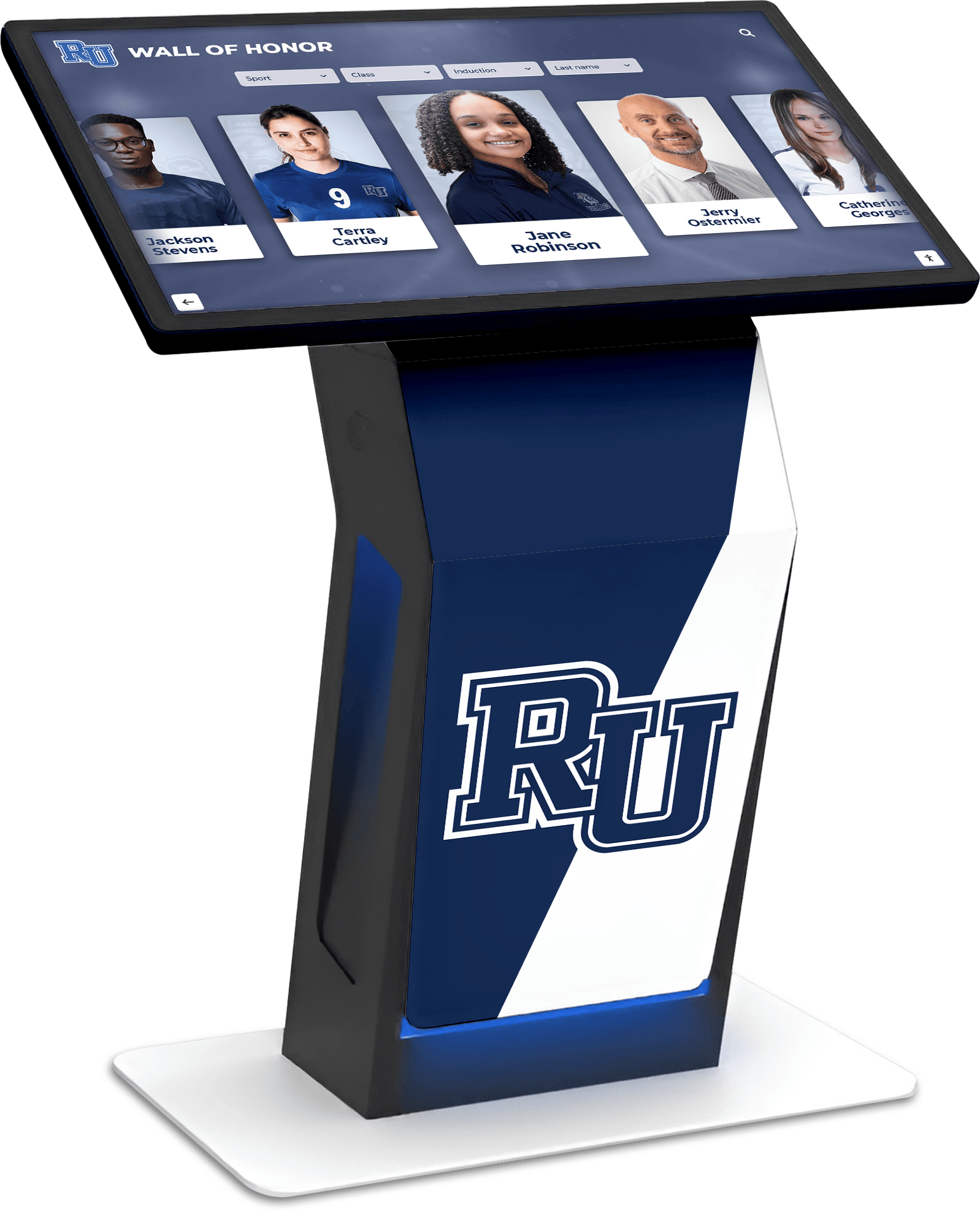
Schools finally document every championship team, every distinguished alumnus, every academic achievement, and every significant institutional milestone without making impossible choices about what deserves inclusion and what must remain hidden. Complete historical coverage becomes practical and affordable, transforming selective preservation into comprehensive celebration of everything that makes your institution special.
Rich Multimedia Storytelling
Digital timelines integrate diverse media types that bring history to life far more effectively than text and static photos alone. Interactive systems combine high-resolution historical photographs documenting decades of school life, video interviews with distinguished alumni and long-serving faculty, digitized yearbook pages from across institutional history, audio recordings of significant events or oral history interviews, and scanned historical documents, newspapers, and memorabilia.
This multimedia richness creates emotional connections that static plaques cannot achieve. Students watching video footage of championship games from decades past, hearing alumni describe how their education shaped successful careers, or exploring digitized yearbooks from their grandparents’ school years develop much deeper engagement than reading brief text descriptions could ever generate.
Searchable, Personalized Discovery
Perhaps the most transformative digital advantage involves searchability enabling personalized historical exploration. Alumni can instantly locate their names across decades of documentation—finding themselves in team photos, achievement lists, yearbook pages, and historical records. Parents can search for their children’s recent accomplishments or discover their own high school achievements from years past. Researchers can explore specific time periods, programs, or achievement categories efficiently.
This searchability transforms passive historical archives into actively used resources generating daily engagement. When community members can find personally relevant content within seconds, interaction time increases dramatically compared to static displays that require linear browsing through potentially irrelevant material before discovering items of interest.
Continuous Updates Maintaining Currency
Cloud-based content management enables authorized staff to update timeline content instantly from any location without requiring technical expertise or physical display access. New achievements appear immediately while enthusiasm remains high, historical content expands continuously as research uncovers forgotten accomplishments, corrections happen quickly when errors are discovered, and featured content rotates ensuring diverse recognition visibility across different time periods and achievement categories.
Traditional displays requiring physical fabrication for updates often languish outdated for years because update costs and complexity prevent timely maintenance. Digital systems eliminate these barriers, ensuring institutional timelines remain current and accurate as living documents that grow alongside your school rather than becoming frozen historical snapshots requiring expensive periodic replacement.
Core Components of Effective Digital Timeline Displays
Successful interactive school history timelines combine several key elements that work together to create engaging, informative, and accessible historical presentations serving diverse community stakeholders.
Chronological Timeline Views
The foundation of any history timeline involves chronological organization that helps viewers understand institutional evolution across time. Effective digital timelines provide multiple chronological views including overview timelines showing decades or major eras at a glance, zoomable interfaces enabling exploration from broad overview to specific year detail, decade-by-decade detailed views grouping related achievements and developments, and parallel timelines comparing institutional evolution with broader educational, local, or national historical context.
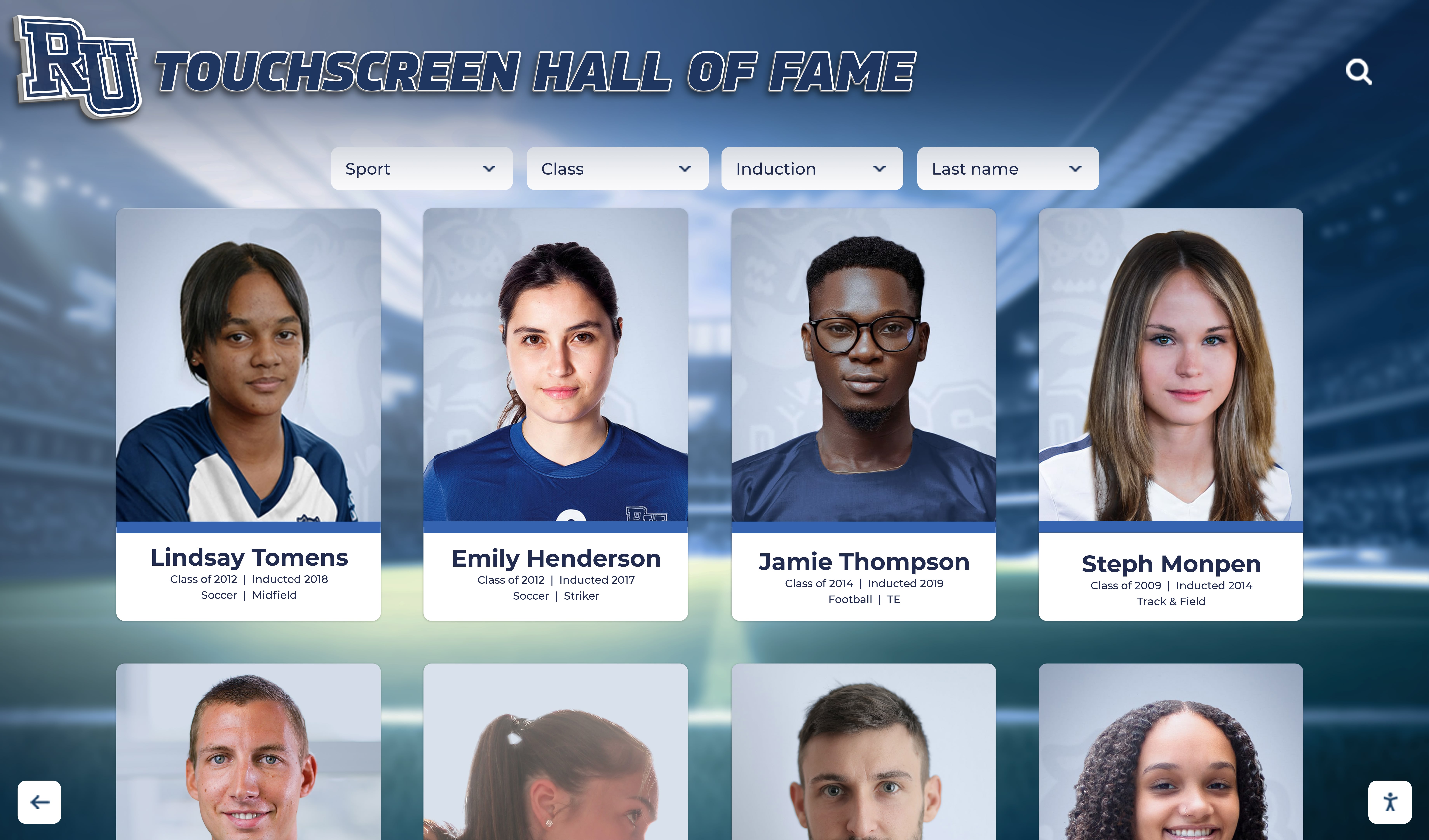
Intuitive navigation allows visitors to move freely through historical periods, jumping directly to years of personal interest or browsing sequentially through institutional development. Visual timeline representations with photographs and icons create engaging overview perspectives that invite deeper exploration of specific periods that catch viewer attention.
Thematic Organization Options
While chronological presentation remains essential, thematic organization options provide valuable alternative navigation pathways that help visitors discover content aligned with specific interests. Effective thematic categories include athletic achievements organized by sport, academic accomplishments categorized by subject or program, distinguished alumni grouped by career field or recognition type, facility development showing campus evolution, and leadership history documenting administrators, principals, and influential educators.
Multiple organizational schemes operating simultaneously let different users navigate historical content through personally relevant pathways. A prospective student-athlete might explore athletic history by sport while an academic-focused visitor browses scholarly achievement categories and an alumnus searches by graduation year—all accessing the same comprehensive historical database through different entry points aligned with individual interests.
Detailed Entry Pages with Rich Media
Each timeline entry should expand to reveal comprehensive information going far beyond the brief descriptions possible on overview timelines. Detailed entry pages integrate high-resolution photographs from multiple angles or time periods, descriptive text providing historical context and significance, video interviews or footage when available, related entries linking to connected achievements or individuals, and social sharing options enabling visitors to share discoveries easily.
This layered information architecture balances accessible overview navigation with depth available for those wanting complete information about specific topics. Casual browsers can efficiently scan timelines while researchers or deeply interested community members access comprehensive documentation—all through the same intuitive interface.
Alumni and Student Profiles
Historical timelines become particularly engaging when they include individual profiles for significant alumni, long-serving faculty, and notable student achievements. Profile pages create personal connections by documenting graduation years and programs of study, athletic and activity participation details, academic achievements and recognitions, post-graduation career accomplishments, and contributions back to school or broader community.
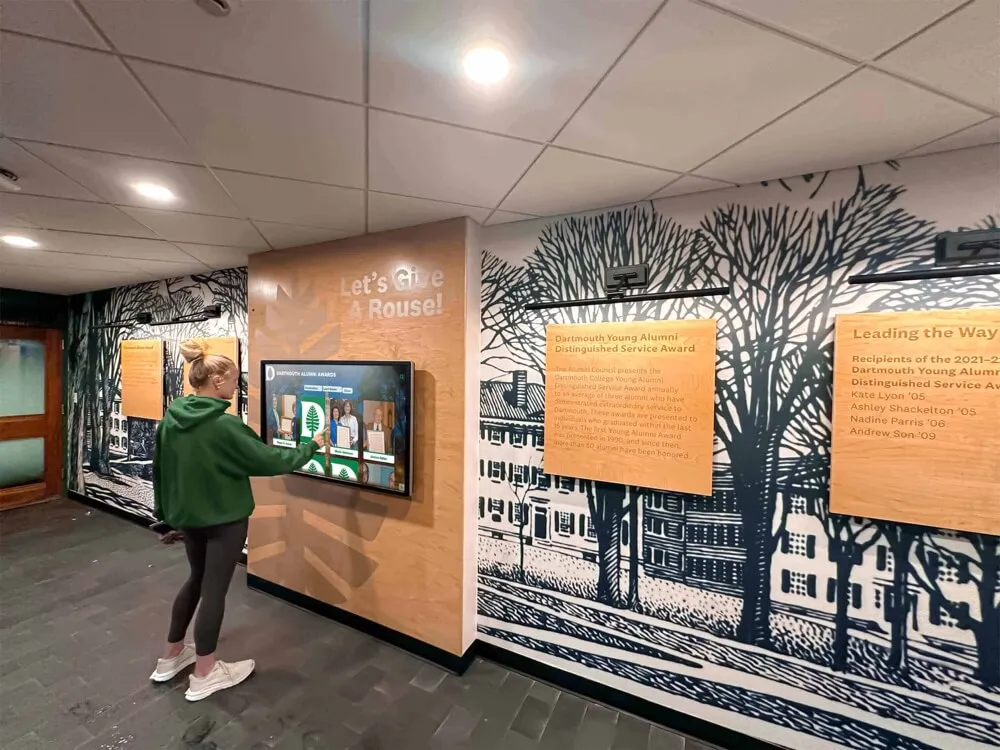
When current students discover that successful professionals in their desired career fields once sat in the same classrooms, walked the same hallways, and faced similar challenges, excellence becomes tangible rather than abstract. These personal connections inspire current students while honoring past community members whose contributions shaped institutional development. Resources on interactive alumni directories demonstrate how comprehensive alumni documentation creates ongoing engagement opportunities.
Integration with Yearbook Archives
The most powerful digital timeline implementations connect seamlessly with digitized yearbook collections, creating unified historical resources where visitors move effortlessly between chronological timeline entries and comprehensive yearbook documentation from corresponding years. This integration multiplies the value of both resources while providing cross-referenced documentation that verifies historical accuracy and provides visual context for timeline entries.
Schools investing in comprehensive yearbook digitization initiatives create foundational content that supports timeline development while serving multiple additional purposes including alumni engagement, historical research, and reunion planning. The combination of organized timeline structure with detailed yearbook documentation creates historical resources far more valuable than either element alone.
Strategic Implementation Approaches
Successfully implementing digital school history timelines requires systematic planning addressing content development, technology selection, stakeholder engagement, and ongoing maintenance ensuring long-term effectiveness and sustainability.
Phase 1: Historical Content Inventory and Research
Begin by comprehensively assessing existing historical materials and documentation across all campus locations and departments. This inventory process includes locating yearbook collections checking condition and completeness, documenting trophy collections both displayed and stored, identifying photograph archives in various departments, reviewing administrative records documenting institutional milestones, and gathering newspaper clippings and media coverage from local historical archives.
Simultaneously, engage community stakeholders who can fill gaps in official documentation through interviews with long-serving faculty and staff capturing institutional memory, alumni surveys requesting historical photographs and memorabilia, community member connections to local historical societies, and family contributions from multi-generational school families. This comprehensive collection phase ensures timeline content draws from diverse sources rather than relying exclusively on incomplete official records.
Phase 2: Content Organization and Prioritization
Raw historical materials require systematic organization before timeline development can proceed effectively. Establish consistent organizational frameworks including chronological categorization by decade or institutional era, thematic groupings by achievement type or program area, metadata standards enabling searchability and filtering, and quality tiers identifying showcase content versus comprehensive documentation.
Prioritize initial content development focusing on areas generating highest community interest such as recent decades with active alumni, showcase achievements representing institutional excellence, periods with rich available documentation, and content addressing known gaps in current recognition. This phased approach enables launching timelines with priority content while continuing to expand historical coverage systematically over subsequent months and years.
Phase 3: Technology Platform Selection
Research available digital timeline solutions evaluating multiple dimensions including user interface intuitiveness and navigation efficiency, content management systems requiring no technical expertise for updates, multimedia support accommodating diverse media types and formats, searchability enabling personalized discovery across comprehensive content, and integration capabilities connecting with yearbook archives and recognition systems.
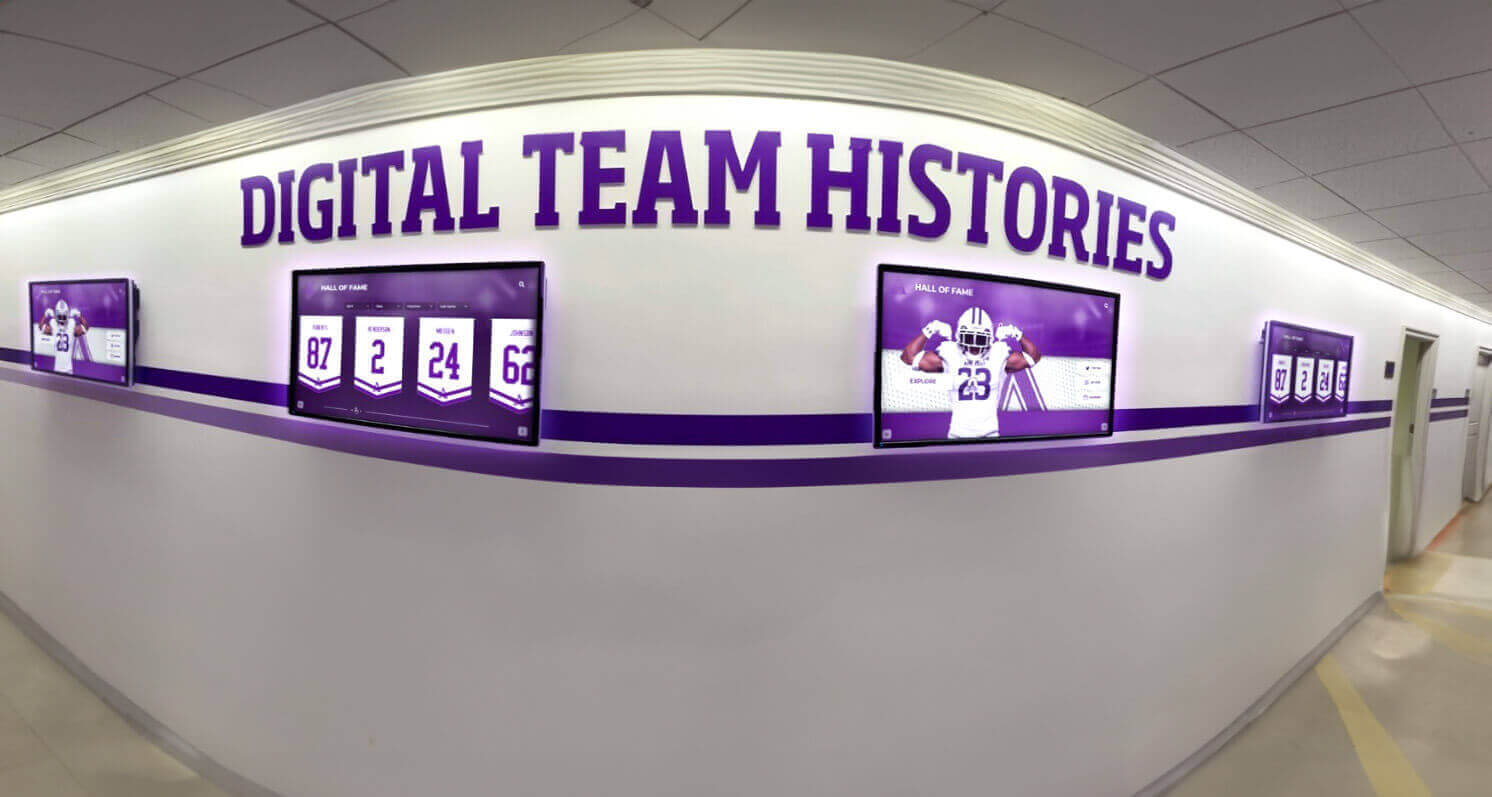
Purpose-built educational platforms like those from Rocket Alumni Solutions provide specialized features addressing school-specific needs that generic digital signage or timeline software may lack. Educational-focused solutions understand institutional workflows, provide templates and examples from similar schools, and offer ongoing support from vendors experienced with school implementation challenges and requirements.
Phase 4: Strategic Display Placement
Location dramatically affects digital timeline engagement and community impact. Optimal placement locations include main entrances and lobbies where all visitors naturally gather, athletic facilities engaging sports-focused students and prospective athletes, libraries and academic commons emphasizing scholarly heritage, performing arts centers showcasing creative traditions, and alumni centers or development offices supporting fundraising initiatives.
Consider implementing multiple displays in strategic locations rather than single comprehensive installations, with each location featuring content relevant to its physical context while connecting to unified comprehensive historical databases. This distributed approach ensures diverse audiences encounter timeline content in contexts matching their immediate interests and activities. Understanding best practices for hall of fame placement provides valuable insights applicable to timeline display location decisions.
Phase 5: Launch and Ongoing Content Development
Rather than waiting to launch until all historical content is completely documented, implement timelines with priority content providing immediate value while continuing systematic historical expansion. Initial launch with foundational content covering major eras and achievements, phased expansion adding depth and breadth systematically, regular updates documenting current achievements and discoveries, and scheduled content features rotating highlighted historical periods or themes keep timelines fresh and engaging.
Establish clear responsibility and workflows for ongoing maintenance including designating content managers with update authority and training, creating standardized processes for adding new achievements promptly, implementing quality review before publication, and scheduling regular content audits ensuring accuracy and completeness. Well-maintained timelines that grow continuously deliver far greater long-term value than static implementations that remain unchanged after initial launch.
Creative Timeline Presentation Approaches
While chronological organization provides essential structure, creative presentation approaches make historical content more accessible, engaging, and memorable for diverse audiences with varying interests and learning preferences.
Interactive Story Arcs Connecting Historical Moments
Rather than presenting history as disconnected isolated events, create narrative story arcs that connect related achievements and developments across time periods. These thematic narratives might trace program evolution showing how small beginnings grew into distinguished traditions, facility development documenting campus transformation across decades, coaching legacies following influential educators’ multi-decade tenures, or competitive traditions chronicling school rivalries and championship pursuits.
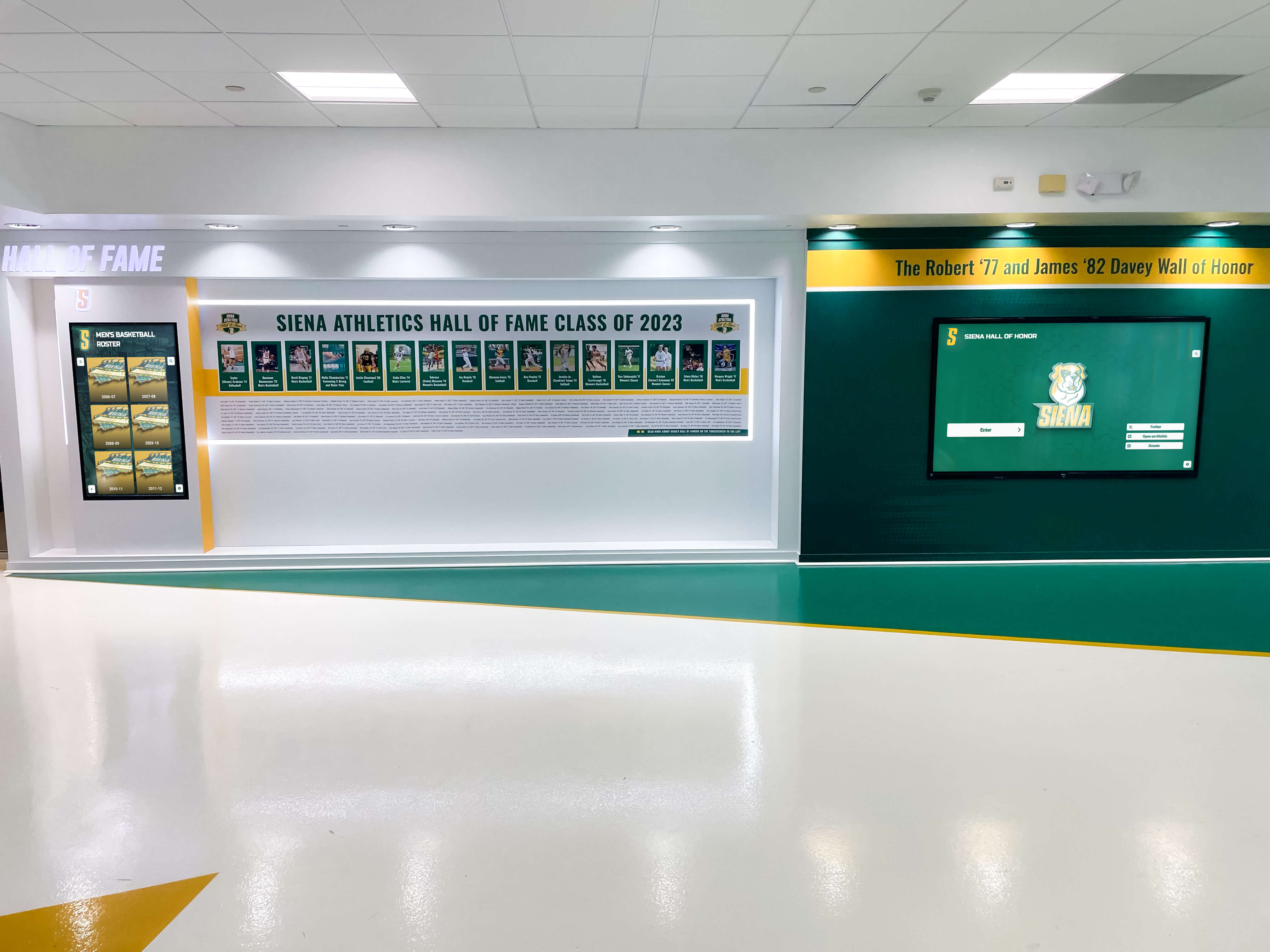
Story arcs help viewers understand causal connections and long-term patterns that chronological lists alone may not reveal clearly. When students discover that today’s state-championship track program began forty years ago with a single coach’s vision and a handful of dedicated athletes, they understand institutional excellence as built through sustained dedication rather than sudden achievement—powerful perspective in our culture of instant gratification.
Then-and-Now Comparative Features
Juxtaposing historical and contemporary images, statistics, or descriptions creates compelling visual contrasts that highlight institutional evolution while maintaining connections to heritage. Comparative presentations might include facility photographs showing campus transformation over decades, uniform evolution documenting changing styles across eras, class size and demographic statistics revealing enrollment growth and changing composition, or technology comparisons contrasting historical classrooms with current learning environments.
These comparisons fascinate audiences by revealing sometimes dramatic changes while demonstrating institutional continuity through evolution. Current students develop appreciation for how previous generations’ experiences differed from and resembled their own, while alumni enjoy nostalgic recognition of their eras alongside curiosity about how schools have evolved since their graduation.
Multi-Perspective Historical Narratives
Comprehensive timelines incorporate diverse voices providing varied perspectives on institutional history rather than presenting single official narratives. Include perspectives from alumni from different eras reflecting on their experiences, faculty discussing teaching evolution and educational philosophy changes, staff sharing behind-the-scenes institutional knowledge, and community members describing schools’ local impact and relationships.
These multiple viewpoints create richer, more authentic historical understanding than single institutional voices alone provide. They also ensure diverse community members see themselves reflected in historical documentation—critical for creating inclusive heritage that celebrates all contributions rather than narrowly focusing on select achievements or populations. Approaches to inclusive recognition programs demonstrate how diverse perspectives strengthen community engagement.
Gamification Elements Encouraging Exploration
Interactive elements that introduce game-like challenges encourage deeper timeline exploration particularly among younger audiences. Consider implementing historical trivia challenges testing knowledge from timeline content, scavenger hunts prompting visitors to discover specific historical facts or images, achievement badges rewarding comprehensive timeline exploration, or leaderboards recognizing most engaged timeline users during specific periods.
These playful elements increase engagement time, encourage returning visits, and make historical discovery feel entertaining rather than educational in potentially off-putting ways. Even modest gamification—simple achievement counts or discovery tracking—can significantly increase interaction compared to purely informational presentations.
Measuring Success and Demonstrating Value
Documenting timeline impact through both quantitative metrics and qualitative feedback helps justify investments, guide continuous improvement, and communicate value to stakeholders who may be skeptical about historical preservation initiatives.
Engagement Analytics and Usage Patterns
Modern digital displays provide detailed usage data revealing how community members interact with historical content. Key metrics include total user sessions and average interaction duration, most-viewed historical periods and achievement categories, common search queries revealing visitor interests, peak usage times and seasonal patterns, and content that generates longest engagement indicating highest interest.
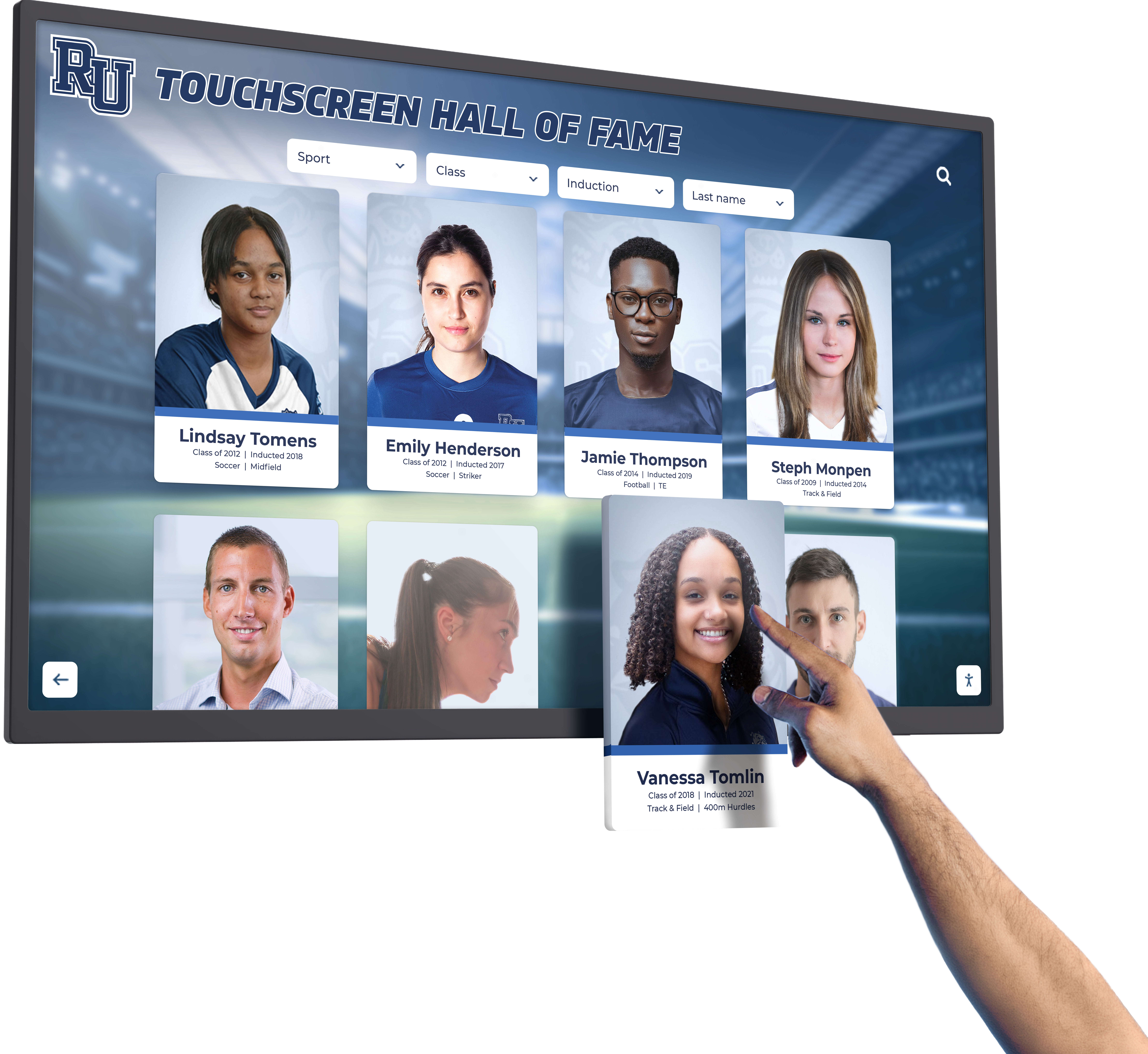
This data identifies which historical content resonates most powerfully, helps prioritize future content development efforts, reveals visitor interests and priorities informing programming decisions, and demonstrates system value through concrete usage documentation. Regular analytics review supports continuous improvement ensuring timelines evolve to serve community needs effectively.
Alumni Engagement and Connection
Timeline implementations commonly generate measurable increases in alumni engagement documented through metrics including alumni website traffic and duration increases, social media sharing of historical discoveries, reunion attendance and participation, unsolicited alumni contributions of historical content, and development office reports of improved donor conversations and giving.
These outcomes demonstrate that historical recognition strengthens emotional connections between alumni and institutions—relationships that support not only philanthropic goals but also mentorship programs, career networking, and volunteer engagement. The ROI of digital alumni recognition extends far beyond initial technology investments when accounting for these multiplying benefits.
Current Student Impact
Perhaps most importantly, evaluate how historical timelines influence current student experiences and outcomes through observations of students voluntarily engaging with timeline displays during passing periods, student surveys measuring historical awareness and institutional pride, academic integration as teachers incorporate timeline content into lessons, and admissions feedback from prospective families about campus visit impressions.
When students demonstrate increased institutional pride, deeper understanding of school traditions, and stronger identification with institutional values, timelines are succeeding at their fundamental purpose: connecting past achievement with present community while building foundations for future excellence.
Integration with Broader Recognition Programs
Digital school history timelines deliver greatest value when integrated with comprehensive institutional recognition strategies rather than operating as isolated historical archives. Thoughtful connections between historical timelines and current recognition create powerful narratives of continuing excellence.
Linking Past and Present Achievement
Create explicit connections between historical timeline content and current recognition programs by linking distinguished alumni in halls of fame to their graduation year timeline entries, connecting current athletic records to historical record progressions showing improvement over decades, relating academic program strengths to timeline entries documenting program founding and development, and tying facility naming dedications to biographical timeline entries about honored individuals.
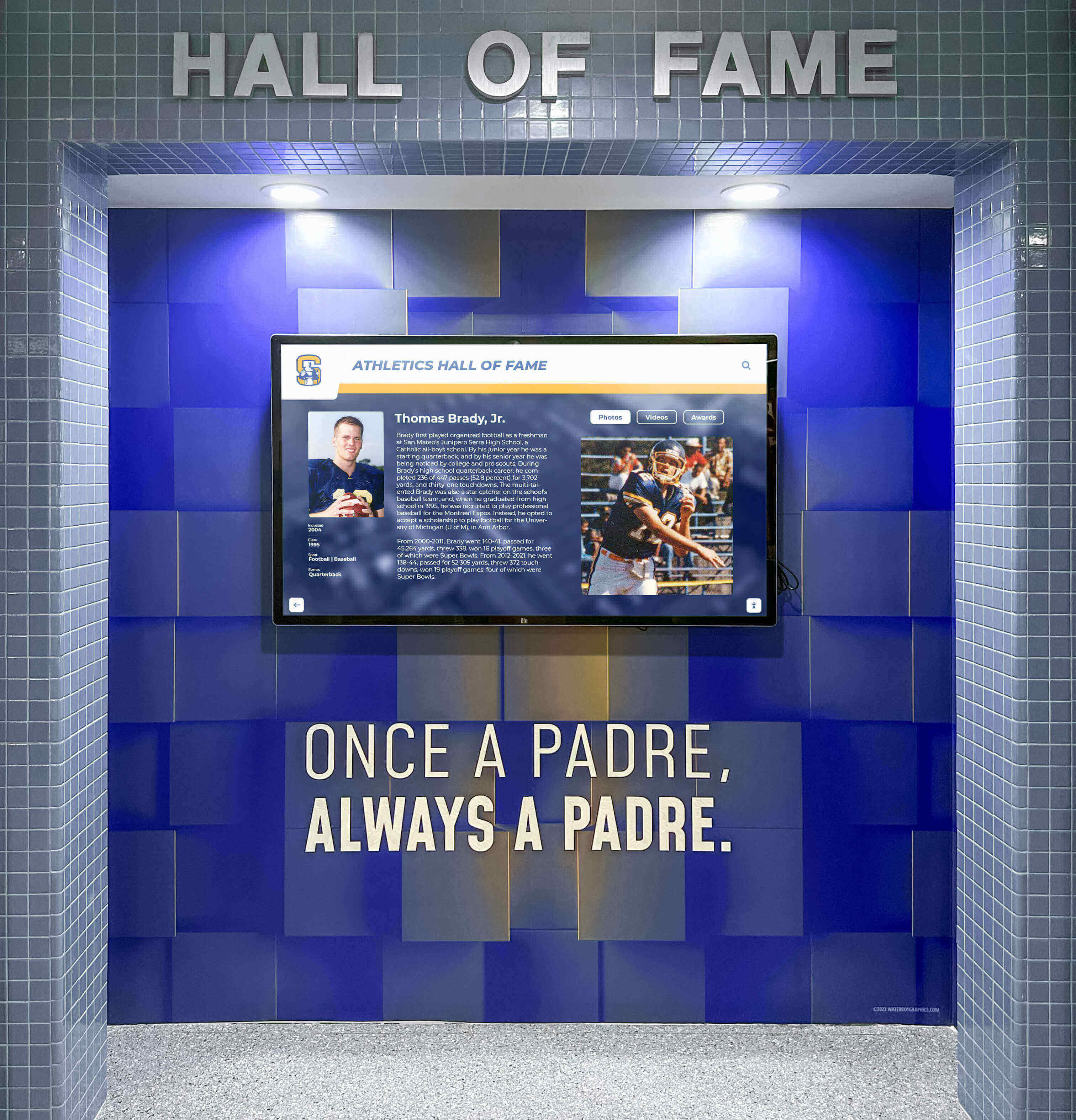
These connections demonstrate that current excellence builds upon historical foundations while showing that historical achievements remain relevant to contemporary institutional identity. Students competing for the same trophies that previous generations pursued understand themselves as participants in continuing traditions rather than isolated contemporary competitors. Resources on athletic recognition programs illustrate how historical context enriches current achievement celebration.
Timeline-Inspired Recognition Initiatives
Use historical timeline frameworks to structure ongoing recognition programs celebrating continuity and evolution through decade-specific alumni recognition where annual inductions focus on graduates from specific decades rotating through institutional history, anniversary recognition programs honoring significant events at 25-year, 50-year, or 75-year milestones, and historical tribute events connecting current students with alumni from parallel eras through shared experiences and timeline presentations.
These timeline-informed programs ensure all historical periods receive regular attention rather than focusing exclusively on recent achievements or limiting recognition to arbitrary hall of fame selection criteria. Every era of institutional history deserves celebration, and timeline-inspired recognition ensures systematic acknowledgment.
Supporting Development and Fundraising Goals
Historical timelines serve advancement objectives by creating donor cultivation tools that demonstrate sustained institutional excellence across generations, providing recognition opportunities acknowledging donor contributions within historical context, offering naming opportunities for timeline sections or featured content areas, and supporting campaign themes emphasizing heritage and continuing tradition.
Development officers report that donor conversations benefit significantly from interactive historical displays that help prospective donors visualize how their contributions fit within longer institutional narratives. When major gifts can be celebrated through featured timeline content alongside historical donor recognition, giving becomes participation in continuing institutional story rather than isolated transaction. Understanding strategies for donor recognition demonstrates how historical context enriches philanthropic relationships.
Addressing Common Implementation Concerns
Schools considering digital history timeline investments frequently raise similar questions about costs, complexity, and long-term sustainability that deserve thoughtful responses based on implementation experience.
“What’s the realistic investment required?”
Digital timeline system investments vary significantly based on scope, with several implementation levels accommodating different institutional budgets and priorities. Entry-level single-display implementations typically range $8,000-$15,000 including commercial touchscreen hardware, software licensing and content management platform, basic content development and organization, and installation and training. Mid-range multi-display installations commonly cost $15,000-$35,000 with multiple strategic location displays, enhanced content development including multimedia integration, and custom branding and design elements. Comprehensive campus-wide systems may require $35,000-$75,000+ investments supporting extensive display networks, professional content production and digitization services, and advanced integration with yearbook archives and other institutional systems.
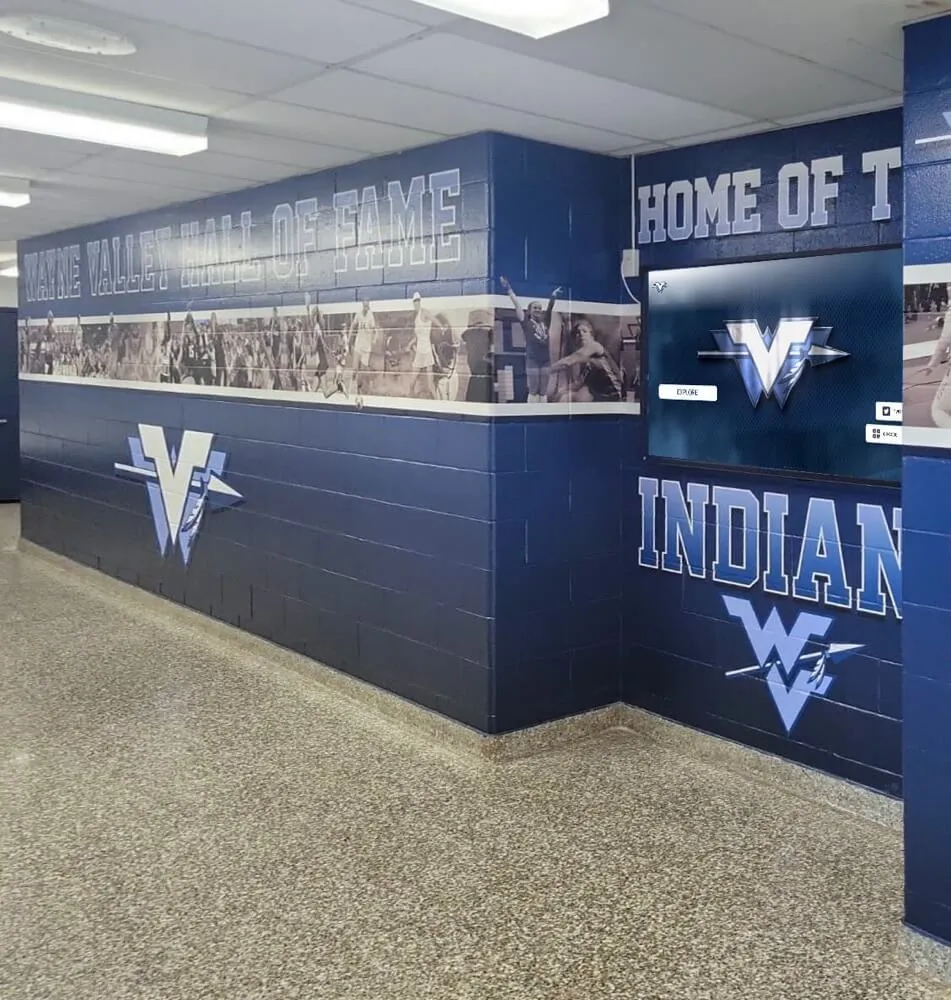
Consider total cost of ownership including ongoing software subscription or licensing fees (typically $1,000-$3,000 annually), content management staff time or contracted services, and periodic hardware refresh cycles (generally 5-7 year timeframes). While initial investments may seem substantial, comprehensive ROI calculations accounting for multiple benefits—student engagement, alumni connection, prospective family recruitment, and donor cultivation—often demonstrate favorable economics over meaningful timeframes.
“How do we manage ongoing content development?”
Sustainability concerns about maintaining current, accurate content represent valid considerations that successful implementations address through systematic approaches. Establish distributed responsibility assigning content management to appropriate departments—athletic directors update sports history, advancement manages alumni profiles, librarians oversee yearbook integration, and communications coordinates overall content strategy. Provide accessible cloud-based tools requiring no technical expertise for content updates, implement regular update schedules with quarterly reviews and annual comprehensive audits, and encourage community contributions enabling alumni to submit historical photographs and memories.
Most schools discover that initial content development requires significant investment while ongoing maintenance demands surprisingly modest continuing effort when proper systems and responsibilities are established. The key involves creating sustainable workflows integrated with existing school operations rather than treating timeline maintenance as extraordinary additional burden requiring special attention.
“Will people actually use interactive historical displays?”
Engagement concerns are understandable given that traditional static displays often receive minimal attention beyond initial installation. However, schools implementing interactive digital timelines consistently report substantially higher engagement than traditional approaches through independently verified observation studies showing frequent voluntary student interaction, analytics documenting average session durations of 3-7 minutes compared to seconds for static displays, alumni testimonials describing extended exploration during campus visits, and social media sharing of personal discoveries indicating digital reach beyond physical visitors.
The combination of searchability enabling personally relevant discovery, multimedia richness creating emotional connections, and interactive exploration matching contemporary technology expectations generates engagement levels that static historical presentations simply cannot achieve. When systems make historical discovery easy, interesting, and personally relevant, community members engage enthusiastically.
The Future of School Historical Storytelling
Digital timeline technology continues evolving rapidly, with emerging capabilities promising even richer historical experiences that deepen institutional connections while reaching broader audiences.
Artificial Intelligence-Powered Search and Discovery
AI integration will enable natural language search allowing questions like “show me all championship teams from the 1980s” or “find alumni who became teachers,” automated content tagging and relationship identification connecting related historical entries, personalized recommendations suggesting content based on previous viewing patterns, and voice control improving accessibility and interface ease particularly for visitors with disabilities.
These intelligent features make comprehensive historical databases more accessible by meeting users where they naturally communicate rather than requiring mastery of specific search syntax or navigation patterns.
Augmented Reality Historical Overlays
AR capabilities available through smartphone applications will enable visitors to point devices at physical campus locations and see historical overlays showing how spaces appeared in previous decades, access location-specific historical information triggered automatically by GPS positioning, view historical photographs overlaid on current environments for direct comparison, and explore “virtual time travel” experiences reconstructing significant historical moments.
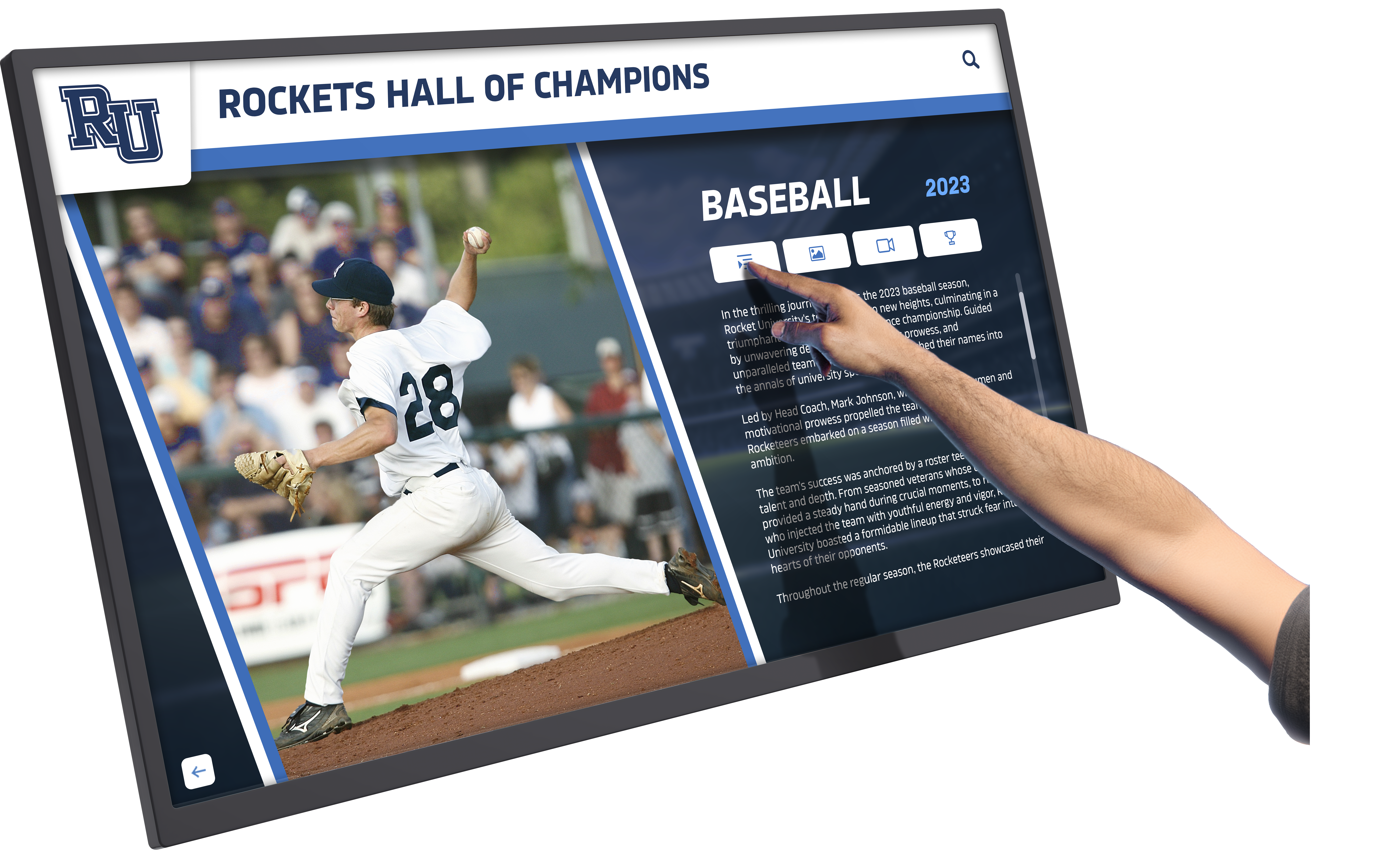
These immersive experiences make history tangible and engaging for technology-native generations while providing novel ways to explore campus heritage that traditional tours and displays cannot match.
Social Media Integration and Crowdsourced Content
Future timeline platforms will feature enhanced social media connectivity enabling one-click sharing of historical discoveries to personal networks, community contribution interfaces welcoming historical photographs and memories from alumni, collaborative content verification where community members suggest corrections or additional context, and trending historical content highlighting what community members are exploring and discussing currently.
This social dimension transforms historical preservation from institutional project into collaborative community effort while extending timeline reach far beyond those who physically visit campus displays.
Virtual Reality Historical Experiences
VR technology will create fully immersive historical experiences including virtual attendance at historical events like championship games or dedication ceremonies, interactive exploration of historical campus buildings no longer standing, and first-person perspective experiences recreating what student life was like during different eras.
While full VR implementation remains emerging technology, selective applications providing unique historical windows create compelling experiences that distinguish forward-thinking institutions.
Getting Started: Your Timeline Implementation Roadmap
Schools ready to preserve institutional heritage through digital history timelines benefit from systematic implementation approaches ensuring successful deployment delivering intended community value.
Month 1-2: Discovery and Planning - Conduct comprehensive inventory of existing historical materials across all campus locations. Form planning committee including administrators, librarians, communications staff, and community representatives. Define clear objectives identifying primary audiences and desired outcomes. Develop preliminary budget and identify potential funding sources including capital budgets, development campaigns, or alumni giving initiatives.
Month 2-4: Research and Content Organization - Digitize priority historical materials beginning with showcase content and at-risk items. Conduct alumni outreach requesting historical photographs, memorabilia, and memories. Organize content using consistent standards enabling efficient timeline development. Research available technology platforms evaluating features, support quality, and educational experience.
Month 4-6: Technology Selection and Installation - Request demonstrations from qualified vendors and check references from similar schools. Make platform selection and secure necessary approvals and funding. Install display hardware in strategic campus locations. Configure software systems and establish content management workflows. Train designated staff on content management and ongoing maintenance.
Month 6-8: Content Development and Launch - Develop initial timeline content spanning institutional history at appropriate detail level. Create featured content sections highlighting showcase achievements and eras. Implement search functionality and navigation systems. Conduct soft launch for testing and staff familiarization. Execute public launch during high-visibility event like homecoming or alumni weekend.
Ongoing: Expansion and Optimization - Monitor engagement analytics identifying popular content and underperforming areas. Gather community feedback through surveys and unsolicited comments. Continuously expand historical coverage filling gaps and adding newly discovered materials. Integrate timeline promotion into admissions tours, alumni events, and community programming. Celebrate milestones and promote discoveries through school communications and social media.
Preserving Yesterday to Inspire Tomorrow
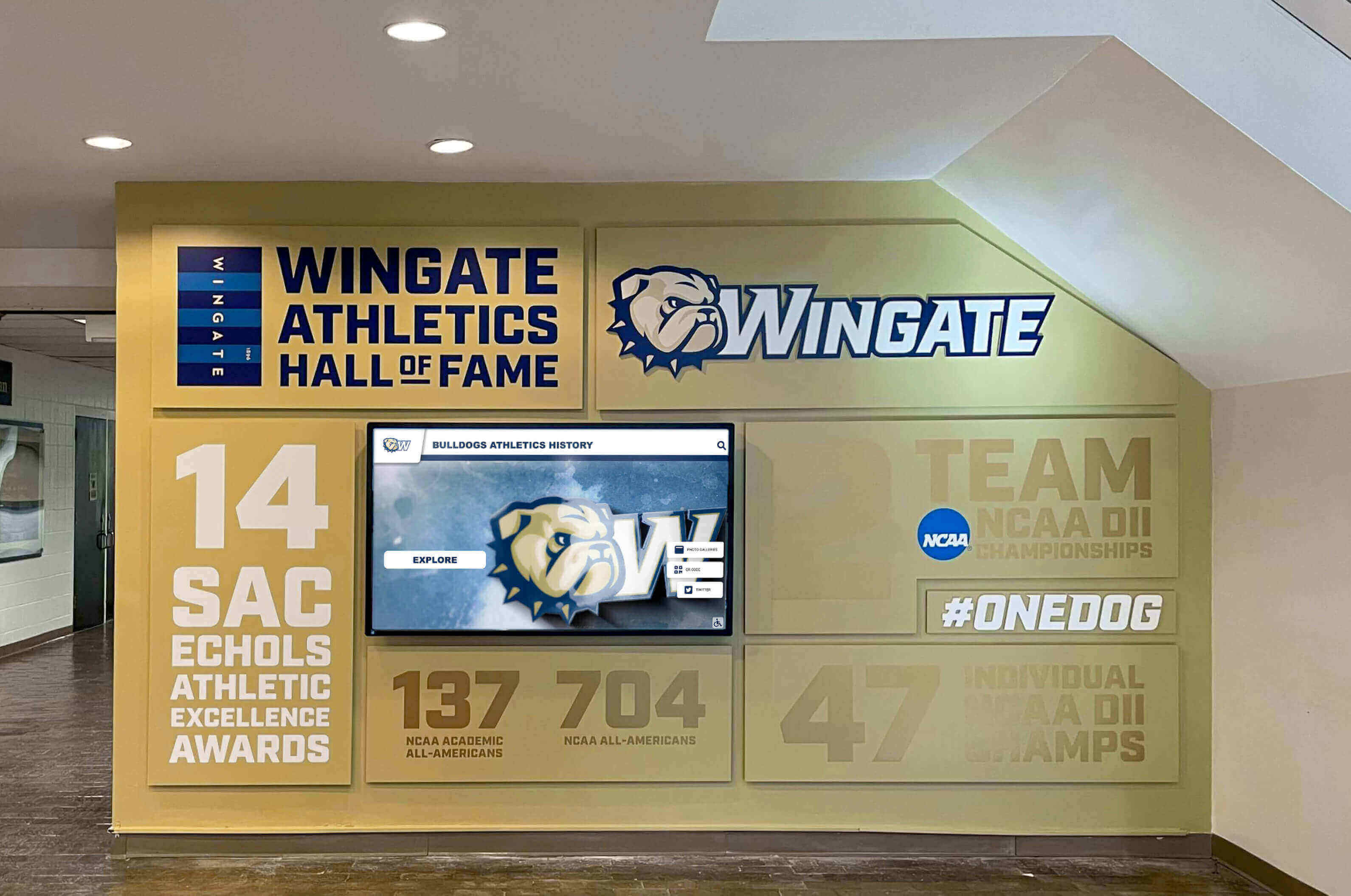
School history represents far more than nostalgic collections of fading photographs and forgotten trophies—it embodies the collective achievement, shared values, and continuing narrative connecting every individual who contributes to institutional development. When schools systematically preserve and celebrate their histories through modern interactive digital timelines, they honor every student who excelled, every educator who shaped minds, every team that achieved greatness, and every graduate who carries institutional identity forward into broader communities.
Digital school history timelines address traditional preservation limitations through unlimited capacity eliminating forced choices about what deserves recognition, multimedia storytelling creating emotional connections that static displays cannot match, searchable databases enabling personalized discovery that dramatically increases engagement, and continuous updates ensuring historical documentation remains living resource growing alongside institutions rather than frozen static snapshot requiring periodic expensive replacement.
The most successful implementations combine sophisticated technology with thoughtful content strategy, connecting historical heritage with current recognition programs while serving multiple institutional priorities including student engagement and pride building, alumni connection and development cultivation, prospective family recruitment and differentiation, and comprehensive community storytelling celebrating excellence across all dimensions of school life.
Whether addressing overflowing storage rooms filled with unrecognized achievements, deteriorating historical materials requiring urgent preservation, forgotten institutional stories deserving documentation, or simply recognizing opportunities to leverage heritage more effectively for community building, digital school history timelines provide practical, engaging solutions that honor traditions while embracing innovations making history accessible for contemporary audiences.
Every school has a story worth preserving comprehensively. Every achievement deserves recognition rather than storage room obscurity. Every student, educator, and graduate contributes to institutional development in ways that merit lasting acknowledgment. When schools commit to honoring their histories through interactive digital timelines, they demonstrate that every contribution matters, every moment of excellence remains valued, and every participant in school community belongs to something larger than themselves—a continuing tradition of excellence spanning generations.
Ready to bring your school’s history to life through engaging digital timeline displays? Explore how solutions like those from Rocket Alumni Solutions transform institutional heritage into active community resources, or discover comprehensive approaches to creating interactive school history displays that serve current students, alumni, and prospective families simultaneously. Your institutional story deserves to be told comprehensively, preserved permanently, and shared broadly—digital timelines make this comprehensive celebration finally possible.



































